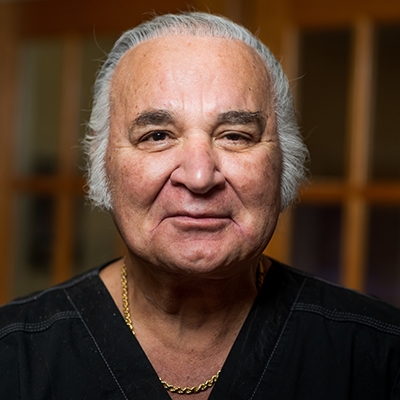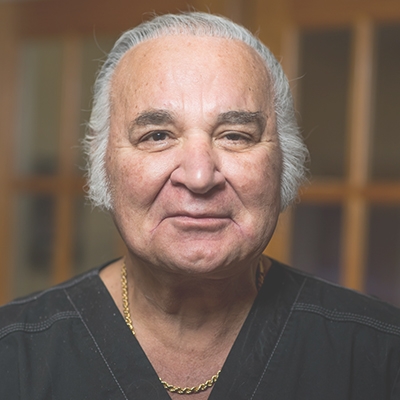Vaginal Rejuvenation Overview
Vaginal rejuvenation can mean many different things. The most common meaning is surgery to tighten the vaginal canal when it feels too loose.
When the vaginal canal is loose, the condition is called vaginal laxity. The main problem is widely separated internal muscles. These muscles are called the levator muscles. Other names for the same muscles are the Kegel muscles and the puborectalis muscles. The most common reason for this problem is vaginal childbirth, but it can also happen in women who have never had children or vaginal childbirth.
The best treatment for vaginal laxity is surgery. The operation is called a vaginoplasty. A vaginoplasty has several components and all of them are included whenever we do a vaginoplasty. This is something that requires very highly developed skills and experience and not all surgeons do this procedure as thoroughly as we describe here:
- Perineoplasty Component: A perineoplasty is a surgical tightening of the skin and muscles of the vaginal opening. We include a perineoplasty with all of our vaginoplasty procedures.
- Rectocele and Pelvic Floor Reconstruction Component: A repair of a bulge of the posterior wall of the vagina by reconstructing the supports to this area. Not all women have a rectocele, but most do and if this isn’t fix at the same time, the vaginoplasty might fail.
- Levatorplasty Component: A surgical tightening of the internal vaginal muscles with a specialized suturing technique. This is what creates the tightening effect. Our suturing technique avoids lumpy knots inside the vaginal walls. This means and stronger and more precise repair, faster healing and more comfortable sex for you and your partner sooner.
- Colporrhaphy Component: A surgical tightening of the vaginal canal skin. It’s critical to do this with finesse. If too much skin is removed, skin will be painful. If too little skin is removed, the scar on the inside might look and feel lumpy. Our techniques avoid these problems.
QUICK LINKS
Vaginal Rejuvenation Can Be a Treatment for the Labia Majora
Some women are bothered by labia majora that appear too flat, too wrinkled, or too saggy. These issues can arise at any age.
Treatments for these issues may be surgical or nonsurgical or a combination of both. They include
- Fat Injections to correct deflation or wrinkles
- Platelet Rich Plasma (PRP) Injections to supplement the fat injections.
- Amniotic Fluid Injections to supplement the fat injections.
- Filler Injections with Juvederm or Restylane to supplement the fat injections.
- Nonsurgical Laser Treatments to tighten loose skin with the Fractional CO2 Laser (FemiLift or MonaLisa).
- Nonsurgical Radiofrequency Treatments to tighten loose skin with the Viveve or Thermiva machines.
- Labia Majoraplasty Surgical Reduction of the labia majora to correct loose or wrinkled skin.
Vaginal Rejuvenation Can Be a Treatment for the Vaginal Opening
The vaginal opening is also called the vaginal introitus. When the vaginal opening is loose, the problem that causes it is a thinned out perineum. A normal perineum is thick and has muscle tissue across the middle. This can only be fixed with surgery. The procedure is called a perineoplasty.
When the vaginal opening is too tight, sex is painful or sometimes impossible. There are a few problems that cause this and the treatment depends on what’s causing the problem. These are:
- Botox Therapy for women who are too tight because of muscle tension (with or without previous surgery).
- Dilator Therapy for women who are too tight because of muscle tension (with or without previous surgery).
- Hormonal Therapy (cream, suppository, other) for women who are too tight because of menopausal dryness and atrophy (shrinkage).
- Nonsurgical Laser Therapy Fractional CO2 Laser Therapy with FemiLift or MonaLisa for menopausal women who are too tight or too dry in the area and don’t want hormones, didn’t improve with hormones, or want to combine this with hormones.
- Nonsurgical Radiofrequency (RF) Therapy with Viveve or Thermiva for women with the same issues as above. There are slight differences between RF and laser and the right choice for you is individualized after a discussion and examination.
- Surgical Therapy with Reverse Perineoplasty for women who are too tight because of previous surgery and don’t want or didn’t improve with dilator therapy.
- Platelet Rich Plasma (PRP) and Amniotic Fluid Injections are sometimes combined with these therapies to fortify the healing process.
201.858.1800
Schedule Your Consultation
VAGINA SURGERY PROCEDURES
Meet The Doctors
DR. PELOSI II


DR. PELOSI III


201.858.1800
Schedule Your Consultation
What About Urinary Leakage?
Urinary leakage is a medical problem covered by medical insurance and the management of urinary incontinence is not called vaginal rejuvenation. There are various types of urinary leakage. Some are treated surgically, others are treated nonsurgically, and others are treated with a combination of both. Common treatments for urinary incontinence include:
- “Bladder Lift Surgery” with either a sling procedure or a non-sling procedure (the Burch procedure is the most common).
- Nonsurgical Bladder Support with a Pessary which is a soft silicone ring that you insert intravaginally when you want or need support.
- Pelvic Floor Muscle Therapy with either a pelvic floor physical therapist and/or biofeedback devices and programs that include Kegel exercises and other exercises in a structure program.
- Pharmacological therapy with either hormones or medications which stabilize an overactive bladder.
What confuses some people is that energy based devices (Viveve, FemiLift, MonaLisa and others) are being used as a treatment for urinary incontinence. While these treatments do help some women with urinary incontinence, they aren’t covered by insurance and there is no good way to predict if they will work beforehand. You need to understand this before you decide to try these treatments for in this situation.
When you have your consultation, we will go over your needs and wants and explore all of your options thoroughly. We will help you decide which solutions work best for you and which ones you should avoid. We offer all of the top requested and reliable procedures in the field of cosmetic gynecology and will provide you with an unbiased and complete analysis. Most of these procedures on the list below can be combined with each other and also with body and breast procedures:
Vaginal Rejuvenation Can Be a Non-Surgical Treatment for the Vaginal Canal
If you have vaginal laxity and it’s not too severe, you might achieve a mild and temporary improvement with nonsurgical treatments with the same energy based devices that we mentioned above for other uses. These are the Viveve Radiofrequency (RF) device and the FemiLift Fractional CO2 Laser. However, the effect won’t be as strong as surgery because they only tighten the skin and not the muscles of the vaginal canal.
If you have a vagina that is too dry and painful because of menopausal changes (menopausal atrophy is the term), most women achieve excellent results with either hormonal therapy or the energy based devices (Viveve or FemiLift) or both. These work much better and more reliably at improving lubrication than they do at tightening the vagina.
Key Facts About Vaginal Rejuvenation
Typical Duration: 1.5 hours
Work: 2-3 days
Sex: 8 weeks
Exercise: 8 weeks
Final Results: 8 weeks
LET'S BE SOCIAL
@PelosiMedicalCenter
[instagram-feed]
CONTACT US
(201)858-1800
Monday to Friday
9:00am – 5:30pm
VISIT US
350 Kennedy Boulevard
Bayonne, NJ 07002